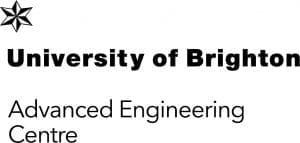A new exciting position available for a Research Fellow in the AEC!
Applications are invited from highly motivated researchers to work as part of a research team on the project ‘Next generation spray simulation model (NGSSM)’. This project is supported by the UK Research & Innovation’s flagship Future Leaders Fellowship scheme and includes theoretical and experimental studies. See further details online, if you have any questions, please contact Oyuna Rybdylova.
Spray is a core phenomenon in a range of technologies, including medical inhalers, surface coating, electronics cooling, fuel injectors in automotive engineering, and the production of dry powder in pharmaceutical applications. Accurate predictions of droplet dynamics, distribution of droplets and their vapour concentration in space and time are essential for making technologies based on sprays more efficient.
The focus of the project is on the development of a novel tool to simulate sprays for engineering applications.
Conventional modelling of droplets is based on tracking individual droplets or small groups of droplets (parcels). This project will take the science to a new level by developing a new mathematical formalism that will be based on droplet size distribution. This will lead to a new strategy for simulation of sprays and will be built around modelling of the evolution of droplet distribution in space and time. This, in turn, will ensure that the new model is computationally more efficient for calculating droplet concentrations than the conventional tracking method. The model will take into account droplet evaporation and condensation, polydispersity of droplets, effect of droplets on the gas flow, and turbulence.
Another direction of the research will be focused on development of a methodology that will link modelling dense spray near the injector nozzle and dilute mixture of gas and droplet further away from the nozzle and the liquid core. We propose to develop a new model that will be based on droplet size distribution formulation. It will be a hybrid Eulerian-Lagrangian model for dense spray near nozzle and fully Lagrangian model downstream. This will be a significant step forward to modelling of the full process: from spray formation to droplet evaporation or deposition. This approach will be particularly useful for applications where distribution of droplets and their deposits, as well as of droplet vapour, are important for end-product quality, for example surface processing/coating.
The new model will be validated against experimental data obtained for a flat fan water injection. The new experiments will focus on droplet spatial distribution as well as droplet size distribution. After validation, we will adapt and test the model for two applications: pressurised-metered dose inhaler and fuel injection. The first study will be done in consultation with Dr Pannala (Biomaterials and Medical Devices and Drug Delivery Research and Enterprise Group). The second one will be conducted in consultation with the industrial partner Ricardo UK Ltd.






Leave a Reply